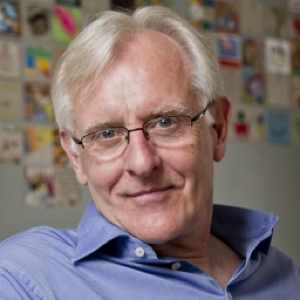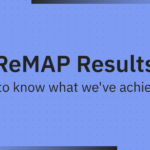A moment of reflection with Bruno Santos, Project Coordinator ReMAP.
And then, all of a sudden, three years have passed. In June 2018, the consortium celebrated the kick-off of ReMAP. With only one year left to proceed, we look back with Bruno Santos on what has been achieved. And we look at the challenges that lie ahead in this very ambitious project. Santos: “Yes, it is a drop in the middle of the ocean, but an essential one.”
What was the biggest challenge you encountered in the first three years of ReMAP?
“Well, that will be no surprise to anyone. COVID shook the world and hit the aviation sector hard. The pandemic has brought economic and commercial uncertainties with which also ReMAP-partners have to deal. Labs have been closed, and colleagues were in layoff for several weeks. So, yes, eventually, there are some delays due to COVID, but that was the only stress in terms of development and implementation. We have not faced any problems in terms of collaboration with partners of the ReMAP-consortium and their willingness to make things happen has been remarkable. We have our own struggles sometimes with results that are not that smooth as we hoped, and we have to put additional work on that, but never something that was a major hurdle in terms of coordination or in terms of ambition.”
What is the major outcome so far?
“The major outcome of this project for sure is, yes, CBM in aviation is possible. The whole process of collecting data from a fleet of aircraft, processing this data, developing prognostics, and producing continuous maintenance plans with those prognostics is possible. On the other hand, another outcome we already knew from the beginning but is now even more obvious is that CBM is not suitable for all systems and not for all aircraft structures. We must be aware of this. But we are now able to analyse which type of systems, eventually also which type of structures, will be more suitable to have CBM as their maintenance philosophy. This will be part of the results.”
Why is CBM not suitable for all systems and structures?
“Condition-based maintenance is not only about big data. From the systems side, we do have many sensors in the aircraft, but they are not installed there to monitor the health of the systems. Sure that sensors data can be used to detect failures in several systems. But for others, this data does not necessarily capture the degradation of the system. For instance, if there is no thermometer next to the system, it will be hard to detect a failure resulting from overheating. That raises some challenges in the quality of the algorithms that we are developing, compromising the reliability of the algorithms. This is a problem that cannot be solved with better algorithms. It is a consequence of the available data that have not been collected for this purpose. So one of the solutions that we are studying to address these challenges is combining data-driven algorithms with physics-based models to enhance the quality of our results and identify the failure roots.
For structures, we don’t have sensors on the aircraft operating nowadays, so we have to test these algorithms in the lab. We have put in practice an umprecendent large scale laboratory test campaign to simulate the fatigue of aerostructures. But still, that doesn’t allow us to scale up our conclusions at the level that we can do for systems.”
Can CBM increase efficiency in the MRO process?
“What we observe from our initial experiments is that the MRO procedure has to change in practice if we want to exploit the CBM philosophy fully. You cannot implement prognostics and diagnostics and keep the maintenance process completely the same. The greatest benefit occurs when the MRO policy is adapted to CBM, especially regarding the frequency an aircraft visits the hangar. In current practice, an aircraft visits the hangar every two to three months. That is a too low frequency to cope with prognostics and be able to react to them. Our simulations show that to exploit CBM benefits better, the aircraft must eventually visit the hangar every two weeks, or every month at least, to have the flexibility to schedule the non-routine CBM tasks, according to new prognostics. This will increase the overall efficiency of the MRO process. MRO-industry will benefit without increasing the burden on the operation side.”
How is the confidentiality of data being secured in this CBM-exercise?
“When we started ReMAP this was a major challenge. We came up with this idea of an open IT infrastructure that allows multiple airlines eventually to benefit from the knowledge of each other without having to share data. We are developing a hub-and-spoke structure in which the CBM algorithms are stored in the hub and transferred to the airline nodes to run using airline data without having the data leaving the airline servers. This was something that we didn’t have in mind when starting the project but eventually turned out to be the best way to make this happen in the future. That made this principle of data-driven-approach possible, even with higher reliability than we aimed because we can then explore concepts as federated learning using data from multiple airlines. That’s a big achievement, which can pave the way for how we see CBM implemented. Some other parties in the market do already something similar but with closed solutions. I think the way we are proposing an open-source platform could be a way of initiating contributing to other spontaneous initiatives to populate this platform with new solutions that can speed up the CBM implementation in the future.”
And now it all comes together in the demonstration at KLM?
“Yes, we are very excited to start the demonstration phase at KLM in September 2021. It is a challenge itself integrating multiple algorithms in one partner’s IT facilities and making it run continuously for six months. This COVID-situation can make this even more challenging. Partners cannot travel to prepare for the demonstration, and there is additional pressure to catch up on some developments. For instance, there is still work to be done to integrate the remaining useful life estimations in the maintenance scheduling decision support tool. This tool relies on a machine learning agent, and the training of this agent requires more time than we expected before we can put this into practice in the implementation. So there are some hurdles we have to take, but that is part of the purpose of the demonstration. There is still work to be done to demonstrate the reliability of the solutions and validate our CBM-approach. This is what we observe now in our process.
There are also some risks or safety challenges ahead. To contribute to the safety discussion, we have already completed an overview of possible hazards and current initiatives on Artificial Intelligence in aviation. We aim to develop this to help us understand better how far can we go with certifying AI-solutions.”
What are you aiming for in this last year of the project?
“This is a very ambitious project, and it’s time-consuming to develop a CBM framework. Sure, the effort we are putting into this is like a drop in the middle of the ocean, and much more has to happen to have a comprehensive state of practice CBM solution. But it has been essential work to get a comprehensive picture of what is needed for CBM and what is the impact of CBM. As part of the results, we are looking at the long term impact of CBM in the life cycle of an aircraft. What would be the benefit in terms of maintenance costs, safety implications, and aircraft availability in aviation from using the CBM. Eventually, we’ll also question our design options. Can we relax on design criteria that we use nowadays and make our aircraft lighter and more efficient because we rely on a reliable CBM infrastructure to monitor the health of an aircraft?
Apart from the technical challenges this last year, we want to involve stakeholders. From this experience and what we observe in the ReMAP consortium so far, CBM will only be possible if stakeholders collaborate in this data-driven vision. With closed solutions, in which MRO service providers, airlines or manufacturers are working alone, not sharing their knowledge – not data, but knowledge – we won’t reach the necessary scale to have a reliable CBM solution for aviation. Stakeholders must join and put their effort in an open collaboration to make aviation much more efficient and sustainable while using CBM and improving maintenance processes. We have plans to restart this discussion with third parties in this last year of the project. That did not happen last year the way that we planned, due to COVID. So we have a higher pressure to do that in the last year through webinars and hopefully in person-to-person at the demonstration and at a symposium in which we will share our conclusions.”






